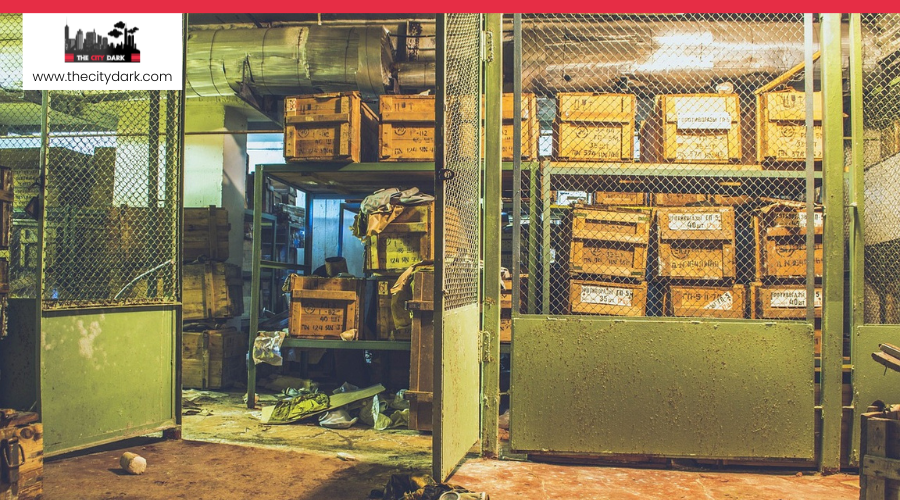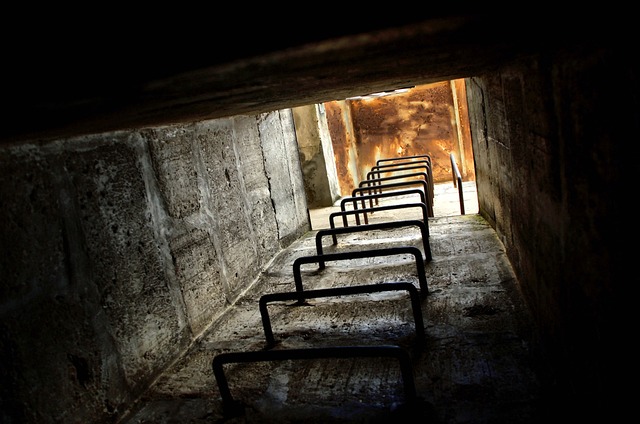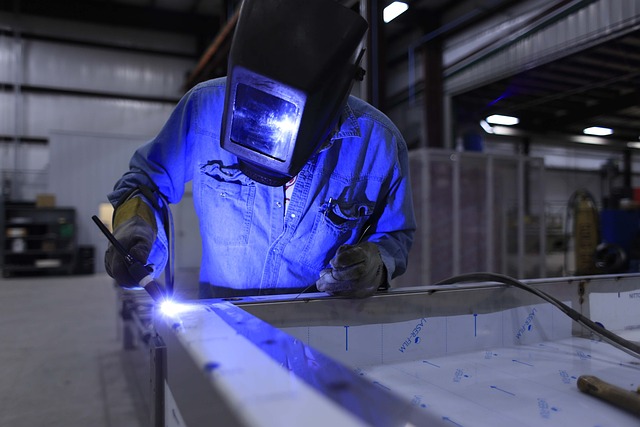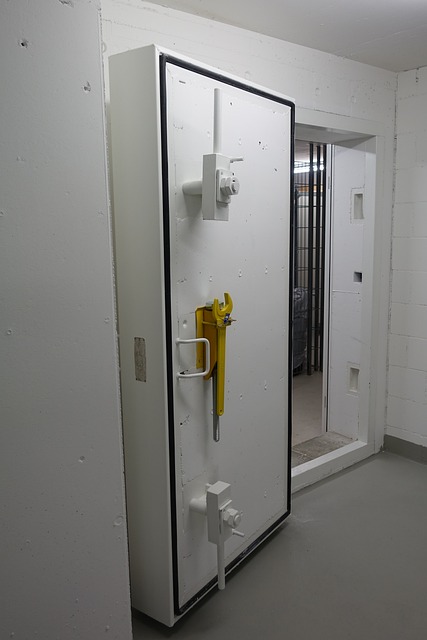Embarking on the journey to build a survival bunker is akin to navigating an iceberg—what you see on the surface is just a fraction of its true size and complexity. You’ve likely considered the obvious expenses, such as land acquisition and construction materials, but beneath the surface lies a myriad of hidden costs that can quickly add up.
From specialized labor fees for installing advanced ventilation systems to the legalities of permits and the potential need for environmental impact studies, the financial waters can get murky. Not to mention, the ongoing maintenance and potential upgrades to ensure your bunker remains a safe haven in times of crisis.
As you ponder the depth of commitment needed, it’s crucial to uncover these submerged expenses to avoid being blindsided and to ensure your investment in security doesn’t become a financial sinkhole.
Let’s explore what lies beneath the initial cost estimate, and why considering these hidden expenses is essential for your project’s success and your peace of mind.
Key Takeaways
- Land acquisition costs for building a survival bunker can vary based on factors such as location, size, and legal requirements. It’s important to consider not only the purchase price of the land but also expenses like property taxes and legal fees.
- Building a survival bunker requires specialized labor from experts familiar with underground construction. Hiring professionals like engineers, electricians, and plumbers can come at a premium due to their specialized skills.
- Permitting and legal fees are significant costs when building a survival bunker. Obtaining permits, adhering to local building codes, and securing necessary approvals may require hiring professionals, adding to the overall cost.
- Environmental impact studies are crucial when constructing a survival bunker. Assessing the potential effects on the local environment, such as air and water pollution, soil disturbance, and impacts on flora and fauna, helps ensure compliance with regulations and promotes sustainable building practices.
Land Acquisition Costs
Before diving into the construction of your survival bunker, it’s crucial to understand that the cost of acquiring land can significantly impact your budget, varying widely based on location, size, and legal requirements. When you’re planning to build a survival bunker, land acquisition costs aren’t just about the price tag on a piece of land. You’ve got to consider the size of the plot you need, its geographical location, and the zoning laws that might affect your construction plans. These factors can dramatically alter the initial budget you have in mind for your underground bunker.
Don’t forget, the expenses tied to acquiring land extend beyond the purchase price. You’re also looking at property taxes, legal fees, and potentially even costs related to making the land accessible for materials and labor to reach it. If your chosen spot is far from utilities or hard to get to, you could see your budget inflate before you even start on the actual bunker.
Doing your homework and seeking expert advice are your best bets in navigating these costs effectively. Remember, understanding the full scope of land acquisition costs is the first step in successfully building your survival bunker without any financial surprises down the line.
Specialized Labor Fees
Moving beyond land costs, you’ll also need to budget for specialized labor fees, which can quickly add up when constructing your survival bunker. Unlike standard construction projects, building a bunker requires experts familiar with the unique challenges of underground construction. This includes engineers, electricians, and plumbers who have experience working in confined, below-ground environments. Hiring these professionals often comes at a premium due to their specialized skills.
Moreover, if you’re working with a bunker company, there may be additional fees related to project management and consultation. These experts guide the project from conception to completion, ensuring that your bunker meets safety standards and your specific requirements. Remember, the cost of labor isn’t static and can vary greatly depending on location, the complexity of the build, and the current market rates.
Here’s a brief overview of potential labor fees:
| Specialized Labor | Potential Fees |
|---|---|
| Engineering & Design | High due to the necessity of tailored solutions |
| Construction & Installation | Variable, influenced by the complexity and duration of the project |
| Shipping Costs for Materials | Can be significant, especially if materials are sourced from afar or require special handling |
Incorporating these specialized labor fees into your budget from the start will help you avoid unexpected costs and ensure a smoother build process.
Permitting and Legal Fees
After considering the specialized labor fees, it’s essential to account for permitting and legal fees that accompany bunker construction. Building an underground shelter isn’t just about the physical construction; it’s also about navigating the legal landscape. You’ll find that costs associated with obtaining permits and adhering to local building codes are significant. These aren’t mere formalities; they’re critical steps to ensure your bunker meets safety and zoning requirements.
Legal fees may arise as you work through zoning regulations and secure the necessary approvals. It’s a complex process, and hiring professionals to manage the permitting can add to your cost. Yet, this expense is crucial for avoiding future legal complications that could arise from non-compliance.
Understanding the legal requirements and associated fees before breaking ground on your shelter is invaluable. It’s easy to overlook these aspects in the excitement of planning your bunker, but they’re as essential as the construction itself. Don’t let these hidden costs catch you off guard.
Environmental Impact Studies
While you plan your survival bunker, it’s crucial to consider how the construction might affect the local environment, necessitating an environmental impact study. Whether you’re concerned about nuclear fallout or simply ensuring your bunker’s sustainability, understanding the ecological footprint of your project is essential. Here’s what such a study will assess:
- The potential air and water pollution from construction activities, including the impact on air filtration systems and water filtration processes necessary for a safe, post-apocalyptic living environment.
- Soil disturbance and habitat destruction that could result from digging and building the bunker, which might disrupt local wildlife and lead to erosion or other long-term soil issues.
- Long-term impacts on local flora and fauna, especially if your bunker requires ongoing maintenance that affects the surrounding environment, potentially disturbing natural habitats and ecosystems.
- Disruptions to natural water sources that could arise from construction, affecting not just your bunker’s water supply but also the ecological balance in the area, necessitating sophisticated water filtration systems to minimize impact.
Considering these factors, environmental impact studies help you navigate the complex interplay between building a secure bunker and preserving the natural environment, ensuring compliance with local regulations and promoting sustainable building practices.
Structural Engineering Challenges
When you’re building a survival bunker, you can’t overlook the structural engineering challenges that come into play. Soil stability analysis, load-bearing capacity, and seismic considerations are crucial to ensure your bunker stands firm against nature’s forces. Ignoring these aspects could lead to catastrophic failure, putting you and your investment at risk.
Soil Stability Analysis
Understanding soil stability analysis is crucial for anyone planning to construct an underground bunker, as it directly impacts the structural integrity of the shelter. Here’s what you need to know:
- Soil stability analysis ensures the soil can support your underground shelter, assessing factors like soil composition and water content.
- Engineers analyze geological conditions to determine the stability of the soil, protecting against subsidence or structural failure.
- The findings guide the choice of foundation design and reinforced concrete usage, vital for a bunker’s longevity.
- It also influences features like proper ventilation, ensuring the environment inside remains safe and habitable over time.
Load-Bearing Capacity
Building on the importance of soil stability analysis, it’s also essential to consider the load-bearing capacity to ensure your survival bunker remains structurally sound and safe over time. Load-bearing capacity is a critical structural engineering challenge when building a survival bunker. It’s the maximum weight your bunker can support, factoring in not just its own weight but any additional loads it may carry.
Calculating this requires a deep dive into soil strength, foundation design, and the materials you’re using. Ensuring your bunker’s load-bearing capacity meets the necessary standards is crucial for safety and long-term durability. Structural engineers are invaluable in assessing and tackling these challenges, highlighting another hidden expense in the building process.
Don’t overlook the importance of load-bearing capacity in keeping your survival bunker secure.
Seismic Considerations
Assessing your area’s seismic activity is key to creating a bunker that can withstand earthquakes and ensure your safety. Whether it’s a fallout shelter, bomb shelter, or a haven from nuclear fallout, seismic considerations are critical. Here’s why:
- Designing for Earthquakes: Incorporating earthquake-resistant features like flexible joints and reinforced walls is vital but increases costs.
- Structural Challenges: Your shelter must withstand ground shaking and potential ground failure. This means more complex engineering.
- Material and Techniques: Seismic considerations often demand specific, more expensive building materials and reinforcement methods.
- Professional Advice: You’ll need a structural engineer with seismic design experience. Their expertise isn’t cheap but is essential for your bunker’s integrity.
Ignoring seismic considerations isn’t an option if you’re serious about safety.
Security System Installations
When planning your bunker, don’t overlook the importance of installing a comprehensive security system. Security system installations are a crucial expense that’ll ensure you’re well-prepared, especially in scenarios like a nuclear attack. Advanced systems with CCTV cameras, motion sensors, and access control don’t come cheap but are essential for your bunker’s safety.
You’ll want to make sure your bunker can withstand unwelcome visitors or any unforeseen threats. Incorporating reinforced doors and windows is part of this security measure, significantly contributing to the overall cost of your bunker. Remember, investing in a robust security system offers not just protection but peace of mind, knowing you’re well-prepared for various emergencies.
However, it’s essential to factor in the cost of professional installation. Security systems require precise setup to function correctly, and professional installers will ensure everything is in place, working as it should. While this may incur additional costs in the bunker construction process, skimping on security could compromise your bunker’s efficacy in critical times.
Sustainable Living Features
After ensuring your bunker’s security, it’s crucial to focus on integrating sustainable living features for long-term efficiency and self-sufficiency. With the looming threat of nuclear war, constructing shelters can cost millions, making it essential to minimize operational costs through sustainable practices. Here’s how you can incorporate these features:
- Renewable Energy Sources: Solar power panels not only reduce reliance on traditional power grids but also ensure your bunker remains powered during extended periods of isolation.
- Water Efficiency: Installing water-saving fixtures and implementing water recycling systems can drastically cut down water usage, a critical factor when access to fresh water might be limited.
- Sustainable Food Production: Incorporating hydroponic gardening systems and vertical farming can provide a continuous supply of fresh produce, enhancing your bunker’s self-sufficiency and reducing the need for external food sources.
- Waste Management: Utilizing composting toilets and efficient waste recycling methods helps in minimizing your ecological footprint, ensuring your survival strategy is as green as it’s resilient.
Integrating these sustainable living features can significantly reduce long-term maintenance expenses, making the hefty initial investment into a bunker more manageable over time.
Maintenance and Upkeep Expenses
Maintaining your survival bunker requires regular checks and upkeep of essential systems to ensure it remains safe and functional. Unlike a swimming pool or home theater, which might seem like luxurious additions to your home, the maintenance and upkeep expenses of a survival bunker are crucial for your safety and can’t be overlooked. These hidden expenses can quickly accumulate, making it vital to understand them from the outset.
Firstly, ventilation and air filtration systems must undergo regular inspection and maintenance to guarantee they function properly, safeguarding your bunker’s air quality. Additionally, emergency supplies such as water, food, and medical kits need constant replenishment, adding to your ongoing costs. Plumbing and sanitation systems, including waste disposal and water storage, require continuous upkeep to prevent any health hazards.
Structural maintenance is another hidden expense, with potential repairs to reinforced concrete or steel components necessary to maintain your bunker’s integrity. Finally, ensuring a continuous power supply means regular testing and maintenance of backup power sources, like generators or solar systems.
These maintenance and upkeep expenses are essential to keep your survival bunker in top condition, ready for any emergency.
Conclusion
In summary, building a survival bunker isn’t just about the initial investment. You’ll also need to factor in the cost of acquiring land, hiring specialized labor, and navigating legal hurdles.
Don’t overlook the expenses tied to environmental studies, structural engineering, and installing security systems. Plus, if you’re aiming for a sustainable setup, the price tag grows with features like renewable energy sources.
And remember, maintenance isn’t a one-time cost; it’s an ongoing responsibility. Plan carefully to avoid unexpected financial strain.




